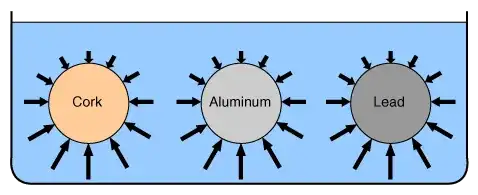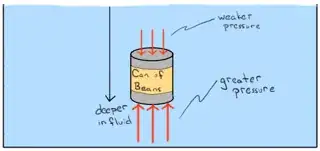from this morning I think about the third law of Newton and the force of buoyancy and I can't solve it. I know that I misunderstood something, but I can't find out what is it. And sorry if my questions are ambiguous, but I'm too tired, I want to find out where I'm wrong. these are my questions:
Why the Buoyancy Force= Force of the liquid that pushes the object upward (F2) - Force of the liquid that pushes the object downward(F1), what is measuring this buoyancy force. (What is trying to find with this operation F2-F1? )
When an object is in the water it pushes the water downward and at the same time, the water pushes the object upward with the same force (gravity) (Newton's Third Law). Then why we compare mg with Buyouncy force to see if is it floating (why we don't compare F2 (upward) + mg (normal force) with f1 (downward). (It was easier when I don't know the third law of motion because I thought only there is mg (gravity force)
Thank you for reading this and helping me to find the mistakes that I made (and sorry for my English :)
Edit: Now I want to know only why the buoyancy force= the force on the bottom - the force on the top

